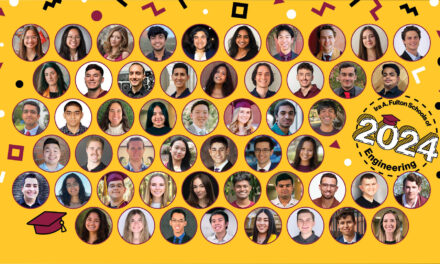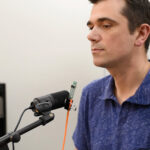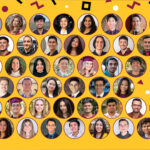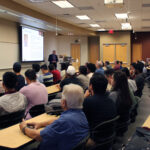
Renowned Luminosity Lab joins Fulton Schools of Engineering
Alignment centered on solving real-world challenges across disciplines

A study tool to help students excel in the classroom. A prototype for NASA to help explore the permanently shaded regions of the moon. A coordinated response network to produce and deliver personal protective gear to Arizona health care providers.
These are all solutions developed by a team of pioneering students in the Luminosity Lab at Arizona State University. Strategic design, systems thinking and rapid product realization drive innovation in the Luminosity Lab and have earned the group more than $20 million in grants, endowments and sponsored research funding.
Now, with a proven model of discovery and development, the Luminosity Lab’s next big move is to leverage the resources and support of the nation’s largest engineering school — the Ira A. Fulton Schools of Engineering at ASU.
“The Luminosity Lab is a microcosm of what we do every day and has become part of the fabric of what we call the ‘Fulton Difference,’” says Kyle Squires, dean of the Fulton Schools of Engineering and ASU’s vice provost for engineering, computing and technology. “Like Luminosity, we embrace agile methodologies and thrive on solving complex problems that make large-scale societal impact. We share a similar mindset.”
As one of the most comprehensive engineering enterprises in the nation, the Fulton Schools of Engineering leverages its unique structure — seven schools promoting transdisciplinary learning and research focused on real-world applications. That structure enables big moves. Today, the Fulton Schools is a significant player in one of the greatest technological expansions in the U.S. as Arizona leads the nation’s semiconductor innovation and manufacturing revolution.
As part of the Fulton Schools, the Luminosity Lab is joining an enthusiastic community of researchers and learners eager to support engineering and technology solutions and promote opportunities for growth and collaboration, all geared toward making the broadest possible impact.
The student-driven, skunkworks-style research and development lab launched in 2015 as part of the ASU Knowledge Enterprise, the university’s center for research, innovation, strategic partnerships, entrepreneurship and international development.
“Knowledge Enterprise is an exemplary incubator for innovative initiatives, and we are excited that Luminosity has advanced into its permanent academic home as it continues to contribute to the ASU and Knowledge Enterprise goal of changing the way the world solves problems,” says Sally Morton, executive vice president of the ASU Knowledge Enterprise.
The Luminosity Lab’s vision is to establish a new model of discovery, development and innovation for the 21st century. Students in the lab bring an array of talents and perspectives to address challenges in areas like health care, energy, education and global climate.
Enabling students to lead their own projects — from design and conceptualization to development and deployment — is a departure from faculty-driven paradigms that are typical in most learning environments. It was also a key part of Mark Naufel’s design aspiration when ASU President Michael Crow challenged him to develop a new approach to project-based learning.
“Traditionally, universities have been designed to be led by the faculty through a mentor-apprentice-type model,” says Naufel, the executive director of the ASU Luminosity Lab. “We reimagined that model, where we give our students the agency to conceptualize, design and lead the development of their own large-scale R&D projects. Luminosity is a chance for students to learn and refine their skill sets by working on real-world projects while tapping into ASU’s network of faculty experts as partners in this process.
Yet, as the complexity of the engineering and technological challenges increases, so does the level of technical expertise required to resolve them.
As part of the Fulton Schools, Luminosity Lab members will have direct access to more than 370 faculty members with whom they can consult and call on for guidance if they reach a roadblock or want to discuss ideas.
Scaling for the Luminosity Lab also means more strategic connections with industry and more opportunities to engage in next-generation challenges. Being part of the Fulton Schools of Engineering will allow members to significantly engage with its strong community of industry partners.
“We are excited to continue to support and connect Luminosity Lab with our industry partners as their work is impactful, solving real-world problems through innovative designs from the best students from across the institution,” says David Wahls, the executive director of development for the Fulton Schools of Engineering.
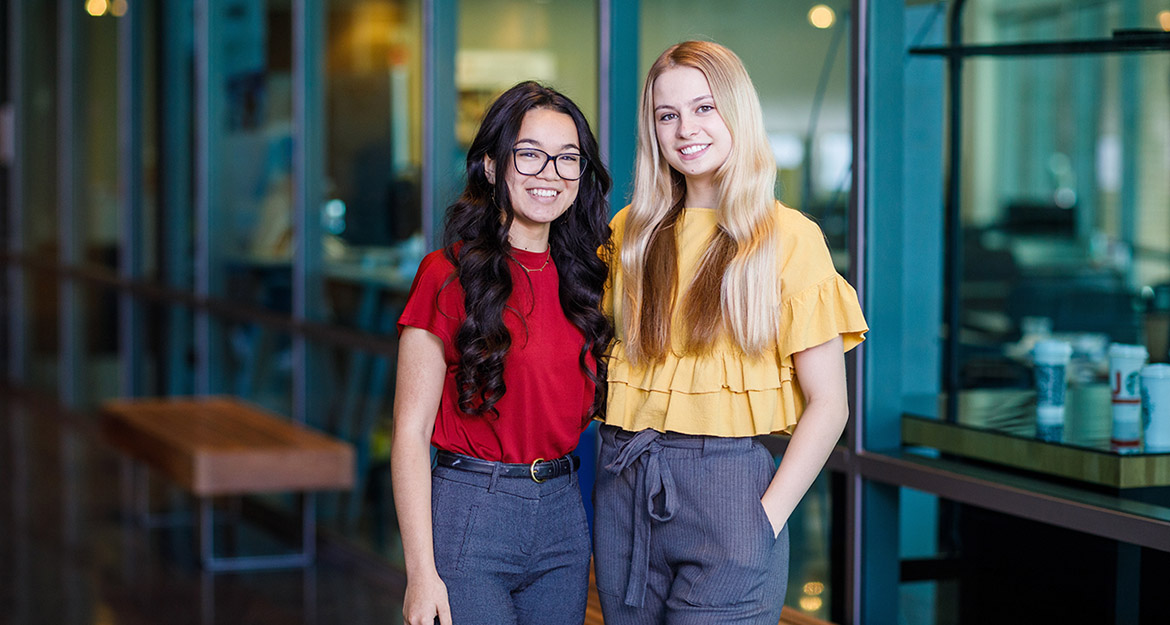
Freshmen students Sylvia Lopez (left) and Brinlee Kidd were named winners of the 2021 Red Bull Basement global competition for their innovative note-taking tool, Jotted. Lopez and Kidd, both students in the Fulton Schools of Engineering, are members of the Luminosity Lab. Photographer: Andy DeLisle/ASU
The Luminosity Lab’s track record of developing and prototyping award-winning solutions continues to earn recognition, with teams winning global competitions and getting requests to partner with major corporations.
In late 2020, a Luminosity Lab team earned the $1 million XPRIZE for designing a cooling facemask with technology that prevents fogging for eyeglass wearers. Lab members won $1.2 million from NASA to design a rover that adeptly maneuvers rocky terrain and deep slopes on the moon. And in March, two freshmen members of the Luminosity Lab represented the United States and won the top prize at the Red Bull Basement Global Final in Turkey for their automated note-taking tool, Jotted.
To date, the Luminosity Lab portfolio includes corporate-sponsored research and development projects to advance tech solutions for adidas, Starbucks, Kimberly-Clark, Bank of the West, Axon and Phoenix Children’s Hospital, to name a few.
By partnering with the Fulton Schools of Engineering, those opportunities will only continue to expand.
Interdisciplinary by design
The Luminosity Lab also hopes to not only serve as a model but to generate more collaborative opportunities for students.
“Even if you’re studying biology or English, it doesn’t matter what background you have,” Naufel says. “There is a set of tools that are relevant to innovating for the 21st century that we encourage everyone to learn, even if they don’t become an expert in them.”
The enterprising group that began with only 15 members today has grown to more than 100 students from across the university. The Luminosity Lab has also launched new labs at Wentworth Institute of Technology in Boston; at Lane College, a historically Black college in Jackson, Tennessee; and is also piloting a high school version called Astralis at Hamilton High School in Chandler, Arizona.
The Luminosity Lab has also gone global with the recent launch of its newest venture at Kwame Nkrumah University of Science and Technology, also called KNUST, in Ghana.
Moving forward, Naufel wants to bring more high-achieving ASU students into research and development cohorts and teach them skills like machine learning and data analytics, which will soon be required for most technology roles.
The move to the Fulton Schools of Engineering opens new doors for access to faculty expertise and opportunities for meaningful work with strategic partners, but the Luminosity Lab will stay true to the model that has gotten it this far — being a place where students from all academic disciplines can learn to thrive.
“When we look for students, we’re looking for curious minds and those interested in positively impacting society,” says Naufel. “There’s a certain type of student that comes in hungry to learn new things and apply what they’ve learned. They want to be on a team where they’re staying up all night pursuing something that will make a difference. Those sleepless nights become worth it on demo day when the students finally get to launch and test their solutions. Our students live for those moments where they get to see the potential impact their work will have on real lives. These are the moments we are eager to scale as we continue to grow Luminosity within the Fulton Schools of Engineering.”
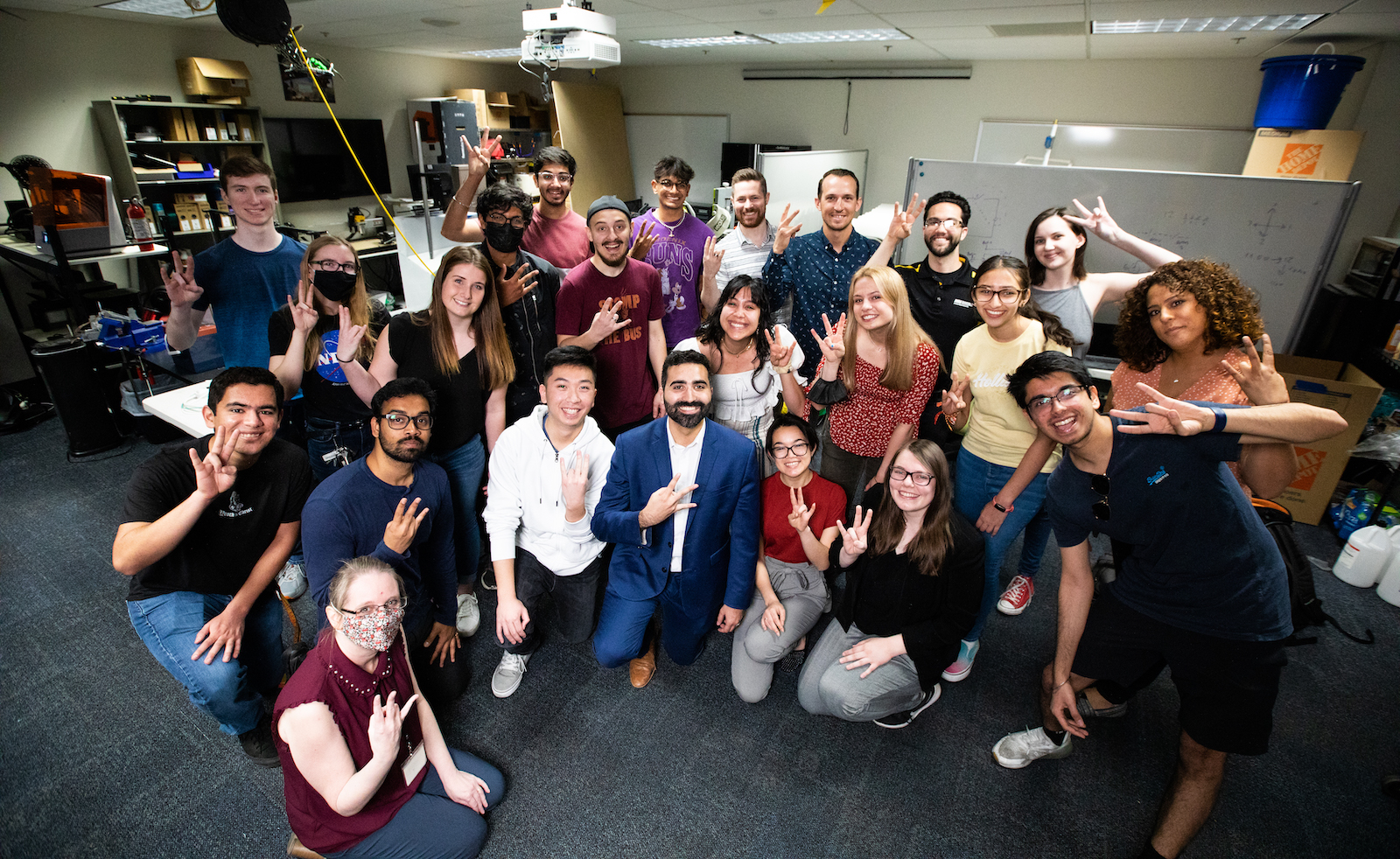
The students and staff of the ASU Luminosity Lab pose for a photo in the Luminosity Lab in the Goldwater Engineering Building on the Tempe campus on Wednesday, March 16th, 2022. The Luminosity Lab is currently working on projects with Phoenix Children’s Hospital, Starbucks and other groups to help create prototype solutions and provide real-world design experience to ASU students. Photographer: Deanna Dent/Arizona State University






